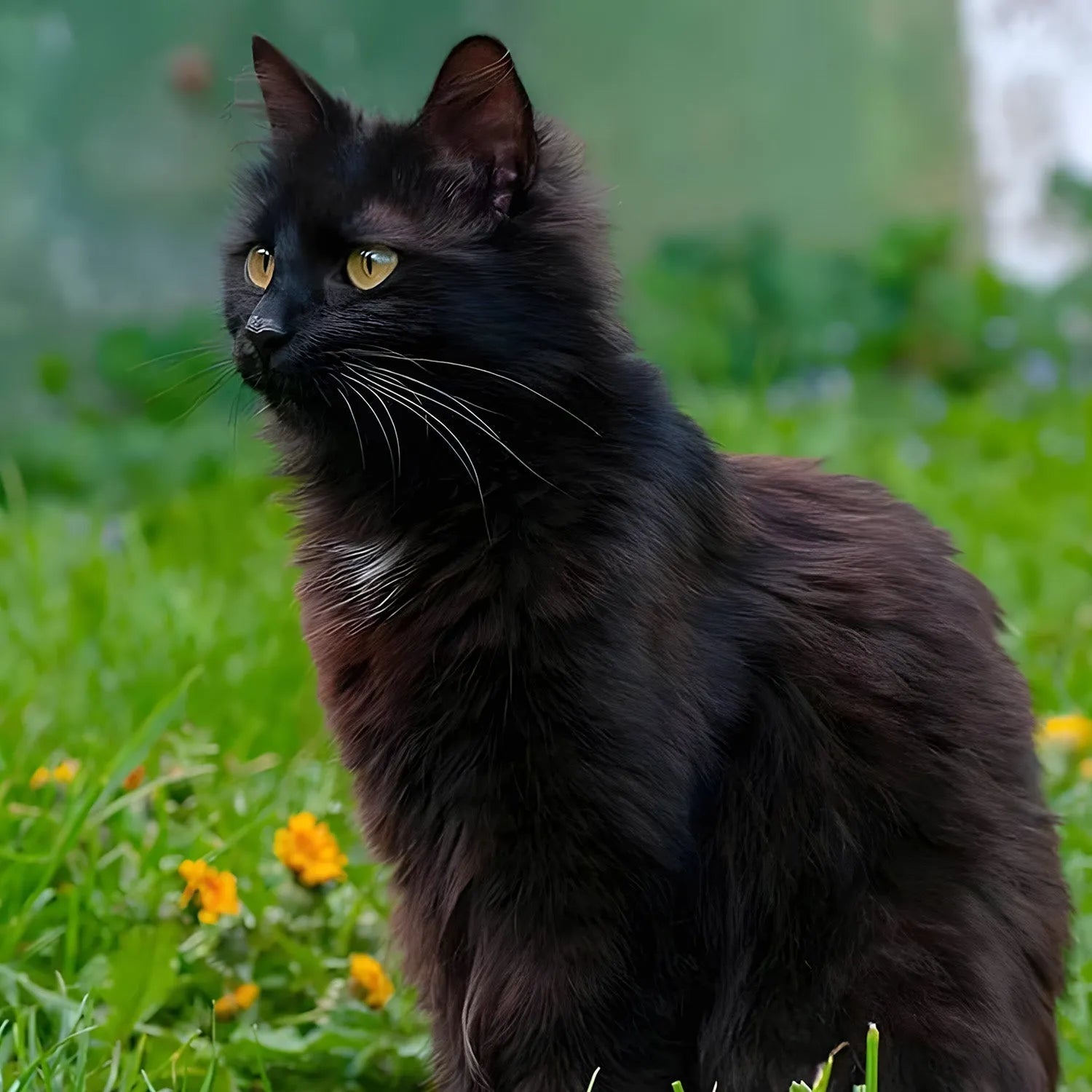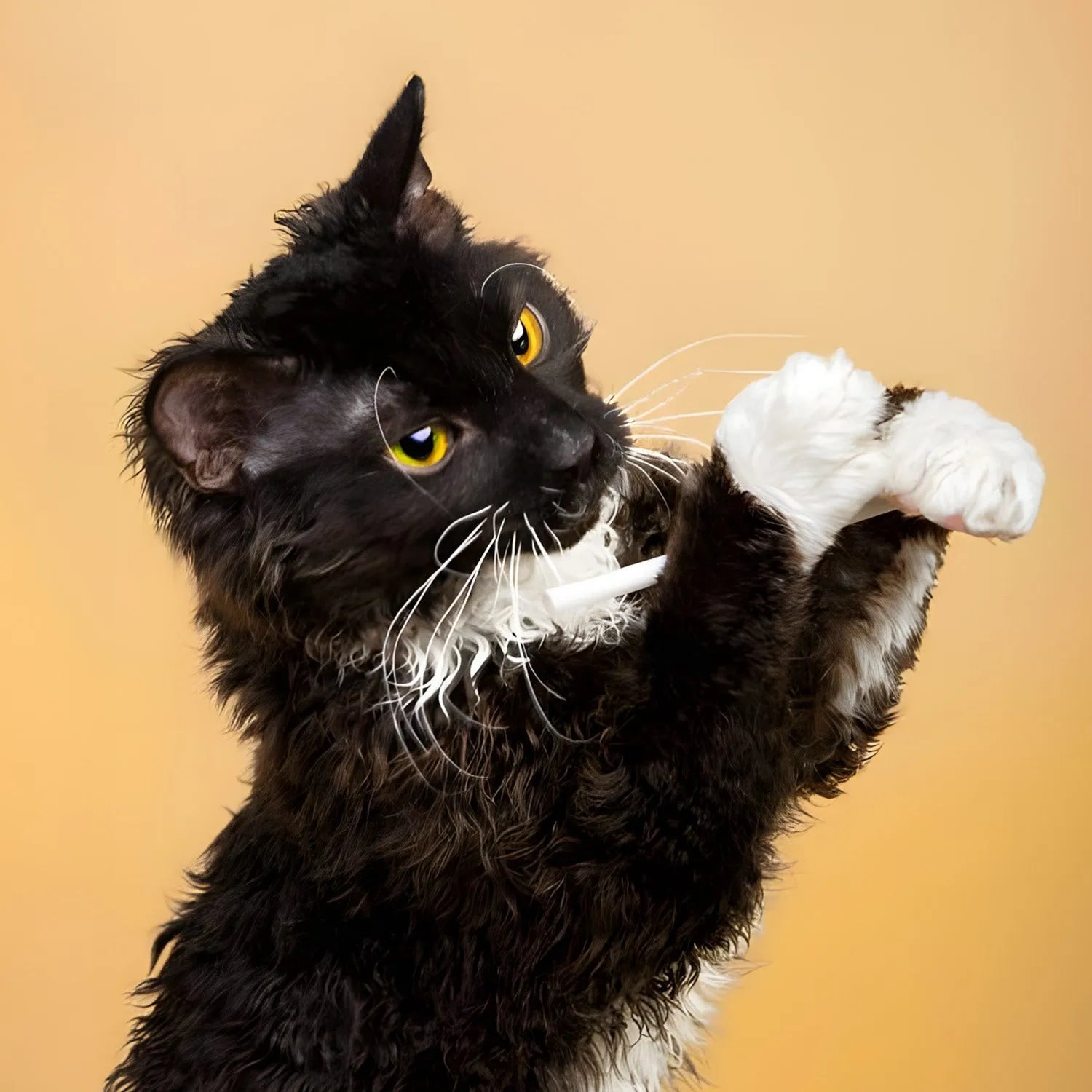California Spangled: The Exotic and Energetic Feline
Introduction
The Burmilla cat is a strikingly beautiful breed with a unique origin. A mix between the Burmese and Chinchilla Persian, the Burmilla combines the best traits of both, resulting in an elegant yet playful feline companion. With their stunning coats, affectionate personalities, and easygoing nature, Burmillas have quickly gained a loyal following. In this blog, we’ll explore the Burmilla cat’s lifestyle, behavior, grooming needs, trainability, and how it interacts with humans and other pets.
Ratings (1-5)
-
Environmental Adaptability: 5
-
Food Consumption: 3
-
Need for Companionship: 4
-
Trainability: 4
-
Tolerance of Children: 4
-
Ease of Domestication: 5
History and Origins
The Burmilla cat originated in the United Kingdom in 1981 as the result of an accidental mating between a male Chinchilla Persian and a female Burmese. The result was a litter of kittens with striking silver coats and affectionate temperaments. These kittens captured the attention of breeders, and the Burmilla breed was formally developed, combining the best qualities of both parent breeds. The Burmilla’s elegant appearance and charming personality led to the breed gaining popularity quickly. It was officially recognized by cat fancier associations in the 1990s and has since become a beloved breed among cat enthusiasts.
Burmillas are medium-sized cats with a well-balanced, muscular build. They have a short to medium-length coat that is incredibly soft and silky, giving them a luxurious appearance. The most distinctive feature of the Burmilla is its silver-tipped or shaded coat, which can come in various colors, including black, blue, chocolate, and lilac. The coat shimmers in the light, creating an elegant and eye-catching effect. Burmillas have large, expressive eyes that are usually green, though gold is also possible. Their facial expression is often described as "sweet" or "gentle," further enhancing their overall appeal.
Lifestyle and Behavior
Burmillas are known for their balanced and easygoing personalities. They are affectionate cats that enjoy spending time with their human companions but are not overly demanding of attention. This makes them an ideal choice for owners who want a loving, low-maintenance cat. Burmillas are playful but not hyperactive, meaning they enjoy interactive play sessions but are equally content to curl up in a cozy spot and relax. They are curious and intelligent, often exploring their surroundings and getting into small adventures. While they enjoy company, Burmillas are also comfortable spending time alone, making them adaptable to a variety of living situations.
Trainability and Intelligence
Burmillas are intelligent and can be trained to follow basic commands and perform tricks. They respond well to positive reinforcement techniques, such as treats and praise, and enjoy interactive toys and games that challenge their minds. Burmillas can be taught to fetch, sit, or even walk on a leash, though they are generally content with a more relaxed lifestyle. Their intelligence also makes them highly adaptable to new environments and changes in routine. They are curious and love mental stimulation, which can be satisfied through puzzle toys or playing games like hide-and-seek with their owners.
Social Behavior and Human Interaction
Burmillas are social cats that form strong bonds with their human families. They are affectionate and enjoy spending time in the company of their owners, but they are not overly clingy. Burmillas are known for their gentle and loving nature, often seeking out a warm lap to curl up in or following their owners from room to room. While they are not as vocal as some other breeds, Burmillas will communicate their needs through soft meows and purrs. They thrive in homes where they can receive attention and affection, but they are also independent enough to handle periods of alone time.
Compatibility with Children and Other Pets
Burmillas are excellent companions for children due to their patient and playful nature. They enjoy interactive play and are generally tolerant of children’s antics, provided they are treated with respect. Additionally, Burmillas tend to get along well with other pets, including dogs, as long as they are properly introduced. Their calm and easygoing nature allows them to integrate well into multi-pet households, and they often enjoy the company of other animals as much as they do humans. Burmillas are known for their ability to form strong bonds not only with their human families but also with other pets in the household.
Grooming and Care
The grooming needs of a Burmilla are moderate due to their semi-long coat. Regular brushing, typically two to three times a week, is recommended to prevent tangles and mats and to keep their coat looking shiny and healthy. Despite their luxurious coat, Burmillas do not have an undercoat, which means they shed less than some other breeds. Regular dental care, ear cleaning, and nail trimming are also important to maintain their overall health. Bathing is generally not necessary unless the cat gets particularly dirty, as Burmillas are generally good at keeping themselves clean.
Health and Lifespan
Burmillas are generally healthy cats, but like all breeds, they can be prone to certain genetic conditions. These may include polycystic kidney disease (inherited from their Persian ancestry) and progressive retinal atrophy (which affects eyesight). Regular veterinary check-ups and a balanced diet are essential to maintain their health. With proper care, Burmillas can live up to 12-16 years. Regular monitoring and preventive care are important to ensure a long and healthy life for your Burmilla cat.
Environmental Adaptability
Burmillas are adaptable cats that can thrive in various living environments. They are known for their resilience and can adjust well to different climates and household settings. Whether in an apartment or a house, Burmillas will find ways to entertain themselves and stay active. However, they do best in environments where they can receive plenty of attention and interaction from their owners. Their adaptable nature makes them well-suited to a wide range of living conditions, and they are equally comfortable as indoor cats.
Feeding Requirements
A balanced diet is crucial for maintaining the Burmilla cat's health and energy levels. High-quality cat food that is rich in protein is recommended. Fresh water should always be available. Consult your veterinarian for specific dietary recommendations based on your cat's age, weight, and health needs. Monitoring their diet to prevent obesity is essential, as Burmillas can be prone to overeating if not properly managed.
Conclusion
The Burmilla cat is an elegant and affectionate breed that brings beauty and companionship to any household. Their intelligence, easygoing nature, and luxurious appearance make them wonderful pets for families and individuals alike. If you’re looking for a cat that combines a striking look with a loving and sociable personality, the Burmilla might be the perfect fit for you.
For more information about other cat breeds and pet care tips, stay tuned to our blog!
References:
-
Lewis, M. (2021). "The Elegant Burmilla Cat: A Guide to Care and Temperament." *Journal of Feline Studies*, 35(3), 201-215.
-
Thompson, D. (2020). "Caring for Your Burmilla Cat: A Comprehensive Guide." *Cat Lover’s Magazine*, July issue, pp. 30-40.
-
Moore, L. (2019). "Health and Wellness in Burmilla Cats." *Veterinary Journal*, 79(2), 123-137.


